'I used to see them as a bunch of rioters': Brazil's radical farmers
Landless workers who occupied disused and degraded farmland were finally given plots – and have transformed them into fields of bounty through agroforestry.
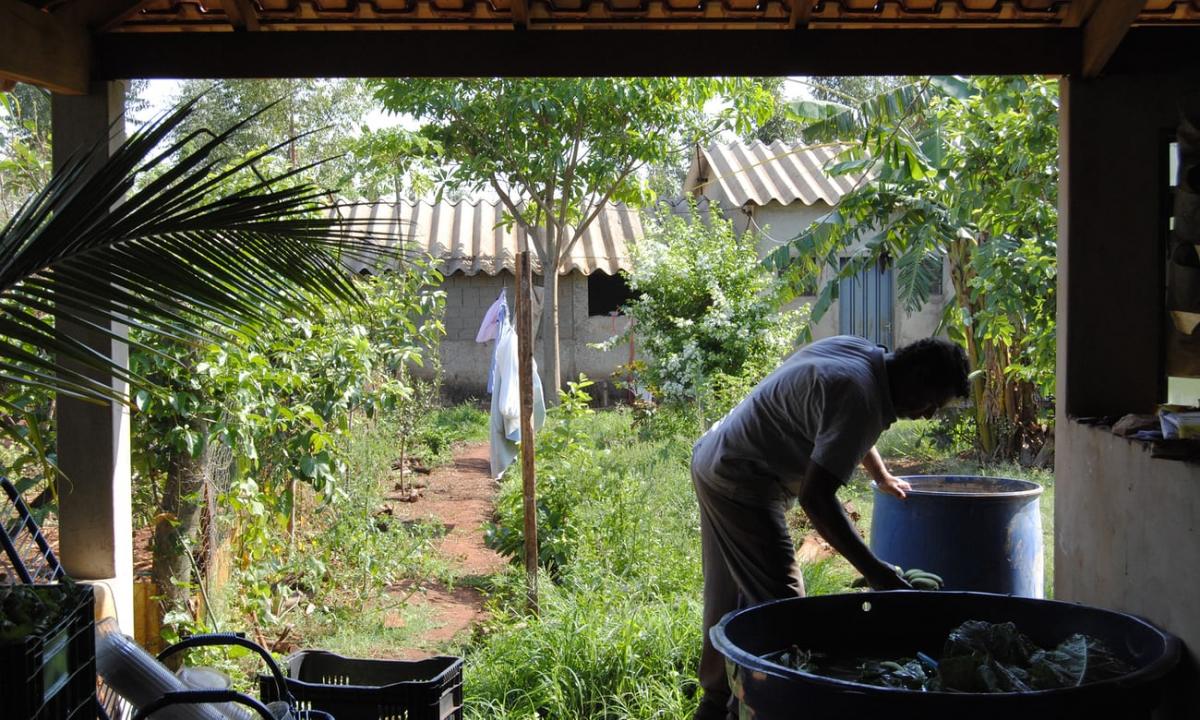
One day in 2005, Zaqueu Miguel was driving his bus through the outskirts of the city of Ribeirão Preto, in south-east Brazil, when he noticed a group of people camped near a rural property.
He discovered that the camp was called Mario Lago, and that the people there were demanding the expropriation of the land – vacant and degraded – in order to use it for farming. Miguel, who had grown up on a farm and had dreamed ever since of having his own piece of land, didn’t think twice. He packed some basics and joined them, keeping his job and family in the city but spending nights in a shack at the camp.
Land inequality is a serious issue in Brazil. A recent report by Oxfam noted that nearly 45% of Brazil’s agricultural land is owned by a mere 1% of tenants. Against this background a group called the Landless Workers’ Movement (MST) has been fighting for the implementation of agrarian reform since the 80s. Occupations such as that of Mario Lago are one of the strategies by which it presses the government to take action, as the Brazilian constitution provides a legal framework to seize lands that are not fulfilling a productive or social use, or when environmental crimes have been committed.
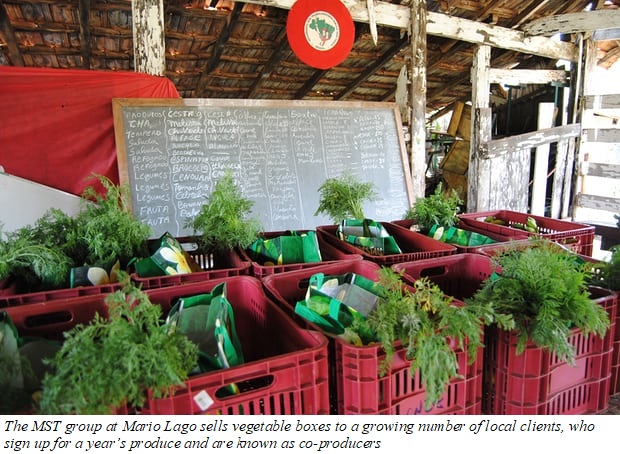
In Mario Lago’s case the land was environmentally degraded and under investigation for a crime of deforestation. The property sits on a groundwater recharge area of the Guarani aquifer, one of the world’s biggest reserve of fresh water. These facts tipped the scales in the squatters’ favor, and in 2007 – four years after the initial occupation – the MST and the government reached an agreement to expropriate the land.
Miguel’s family and 263 others were each given a plot of 1.7 hectares (4.2 acres). But the agreement included conditions that would radically transform the land and the way the farmers worked with it: the farmers would need to reforest 20% of the area with native trees, and 15% would be devoted to agroforestry – the integration of trees and shrubs with crops and livestock systems – and worked collectively. In time, Mario Lago would become an agroforestry showcase.
Miguel is one of the 50 farmers who today use the management system on their own lands. “In a forest, when a tree falls, it opens a clearing and an infinity of life forms follow. But while in nature this only occurs every now and then, in agroforestry we make it happen more often,” he says. “We have studies that show that this pulse in the clearings, this falling and growing, is much better in terms of climate, soil and water.”
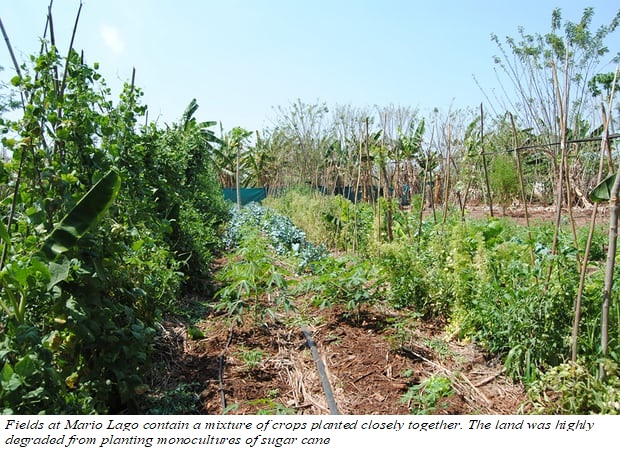
But following nature’s methods may sometimes seem counter-intuitive – or even impossible. Miguel recalls that in the early days, many farmers resisted some of the agroforestry precepts, such as planting grass as a first step to restoring the land, which was highly degraded from planting monocultures of sugar cane.
“The farmer struggles to clear the lot, and when he finally manages to remove all the sugar cane with a hoe you tell him that he has to plant grass. The guy wants to kill you!” says Miguel.
Although there is no single recipe for agroforestry, common practices include periodically pruning the trees and using their branches and leaves to cover the soil, as well as combining crops to allow synergies between species. Nelson Correa, who was one of the pioneers of agroforestry in Mario Lago, defines it as a way of incorporating food production into the processes of nature. “In agroforestry we work to regenerate the environment,” he explains. “Productivity is a consequence of that regeneration.”
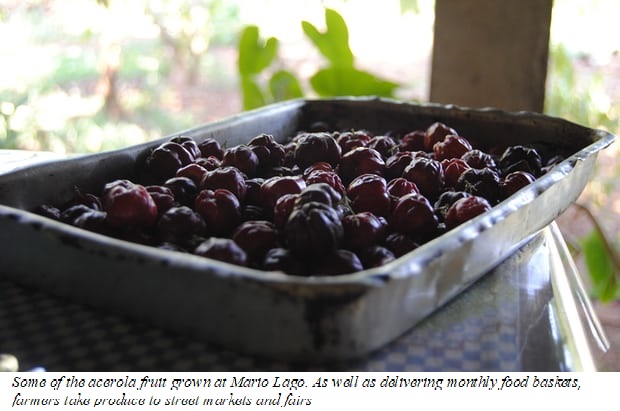
“I used to need a whole bed for lettuce, another for cabbage,” says Miguel. “Today in the same space I plant five times more than what I planted before. And I plant things like corn, which I never thought could be grown in a vegetable garden.”
Another farmer who converted to agroforestry is José Ferreira, known as Paraguai. “I used to think of the MST as a bunch of rioters,” Paraguai confesses. “But the movement provided us with a great knowledge of the world. To me that is its most important legacy. Besides their fight for the land, planting and taking care of nature, they have a strong social side.”
With agroforestry, Paraguai says that in a single week he can collect parsley, chives, tomato, chicory, lettuce, rocket, cabbage, broccoli and leek. “He who understands the processes of agroforestry doesn’t go back to conventional farming.”
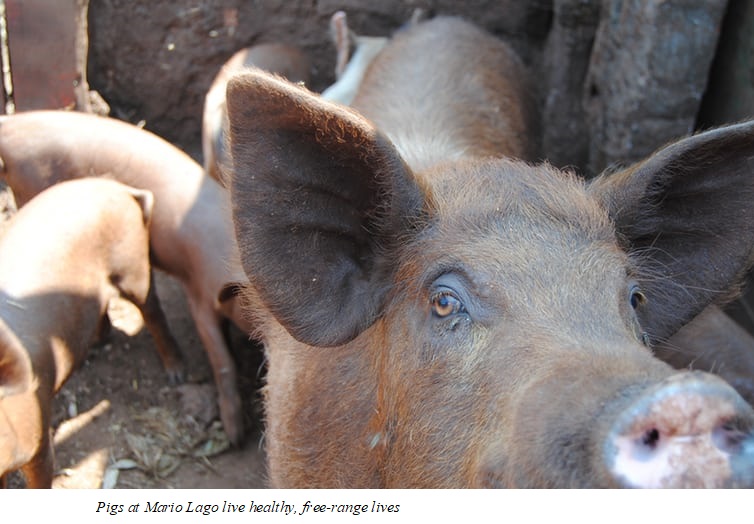
In order to sell their produce, 26 of the families created a cooperative called Comuna da Terra, which delivers weekly baskets to consumers in the town. It follows a model known as community-supported agriculture (CSA). The cooperative also takes its produce to street markets and fairs.
Every Monday the content of the baskets is decided by all the farmers, based on their production. CSA consumers have a one-year commitment and pay a fixed amount monthly, thus sharing the risks with the farmers and providing economic stability.
“Our consumers come here, they help us plant and collect, they participate in our meetings,” says Miguel. “In fact, we don’t even call them consumers, we call them co-producers.”
He says most agroforestry farms in Mario Lago are economically viable and produce enough income to sustain their families. Arguably, part of the success comes from the fact that their business model cuts out the middleman, with all revenue going directly to the farmers.
Mario Lago is rapidly becoming an important player in Brazil’s agroforestry scene, where people see it as a potential strategy for tackling pressing environmental problems. Despite recent good news, Brazil is facing a worrying upward trend in Amazon deforestation rates since 2013. And after a year of drought and fires, the figures for 2017 are expected to worsen.
Some experts argue that promoting agroforestal systems over cattle pastures in the Amazon could favour a more sustainable use of the land, curbing deforestation and providing shelter for tropical biodiversity. Agroforestry could also be an interesting farming alternative for those living in Brazil’s semi-arid north-east and other areas threatened by desertification, where it could help to restore poor and degraded soils.
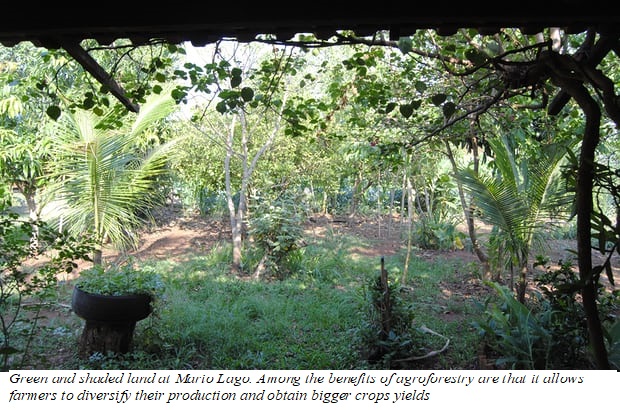
“In Brazil, our fields are completely devoid of nature. They’re controlled by agribusiness, which has a philosophy of dominating nature. We need to take nature back into our fields,” Correa says.
In the last few months Miguel has fulfilled his dream. Twelve years after joining the camp and 10 after he got his land, he finished building a house – and his wife and two sons finally moved in. He says the MST and agroforestry have changed his life.
“I used to be very consumerist; now financial issues are the least important to me. What I like now is to be among people, talk to them, spread this knowledge … to change the world.”
Article and Photos by: Ignacio Amigo Published in The Guardian, January 25, 2018
Original URL: https://www.theguardian.com/working-in-development/2018/jan/25/bunch-of-rioters-brazil-radical-farmers-agroforestry
